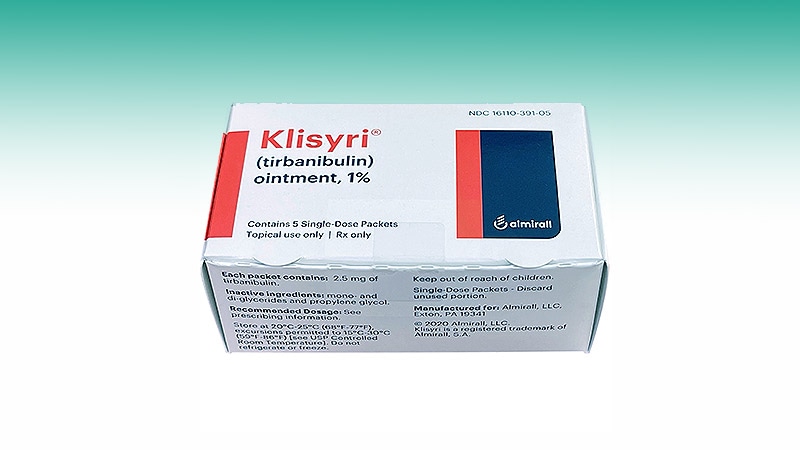TOPLINE:
Sequential treatment with cryotherapy followed by 1% tirbanibulin was well tolerated, improved lesion clearance, and prevented new lesions in solid organ transplant recipients (SOTRs) with actinic keratosis (AK) compared with cryotherapy alone, a study found.
METHODOLOGY:
- Researchers evaluated 37 SOTRs (mean age, 70.7 years; 35 men), between May and December 2024. Each participant were at least 1 year post-transplant, had four to eight AKs on two 25 cm² areas of the face and/or scalp.
- Participants underwent baseline cryotherapy on both target areas; one area then received a 5-day course of 1% tirbanibulin ointment 1 month later, and the other area received no further treatment.
- The primary outcome was the variation in the AK count within the sequential treatment area at 4 months of follow-up. Secondary efficacy outcomes were complete (100% clearance of lesions) and partial responses (reduction between ≥ 75% or < 100%). A response under 75% was considered no response.
TAKEAWAY:
- At 4 months, the mean reduction in AKs was 81.6% in sequential treatment areas vs 53.4% with cryotherapy alone (P < .001). Total AK counts in areas treated with sequential therapy fell from 197 to 38 lesions with sequential therapy vs 195 to 91 with cryotherapy alone.
- Complete response rates were higher with sequential therapy (51.4%) than with cryotherapy alone (10.8%; P = .001). Partial response rates were 24.3% with sequential therapy vs 27.0% with cryotherapy alone.
- Mean numbers of new and persistent lesions from day 30 to month 4 were lower with sequential therapy (0.59 and 0.43, respectively) than with cryotherapy alone (1.32 and 1.14, respectively). (P = .03 for the difference in new AK lesions; P < .001 for the change in persistent AK lesions).
- Adverse effects with sequential treatment were predominantly mild, with a mean local skin response score of 4.57; erythema and scaling were the most common. No severe (grade 4) reactions were reported.
IN PRACTICE:
“Our study suggests that sequential treatment with cryotherapy and tirbanibulin 1% ointment could be an excellent option in SOTRs due to its efficacy, tolerability, and safety,” the authors wrote. “The combination of a lesion-directed therapy with a field treatment effectively treats AKs and appears to reduce the occurrence of new lesions, at least within the first 3 months following treatment,” they added, noting that longer follow-up of is needed to confirm the results and determine whether effects persist.
SOURCE:
The study was led by Ana Morelló-Vicente, MD, University Clinic of Navarra, School of Medicine, University of Navarra, Pamplona, Spain. It was published online on August 1, 2025, in the Journal of the American Academy of Dermatology.
LIMITATIONS:
The follow-up was limited to 4 months, precluding assessment of long-term efficacy. Additionally, the single-center design may have limited generalizability of the findings, and adherence to home-applied tirbanibulin could not be fully verified.
DISCLOSURES:
This study was funded by Almirall S.A. in Barcelona. The authors reported having no relevant conflicts of interest.
This article was created using several editorial tools, including AI, as part of the process. Human editors reviewed this content before publication.
